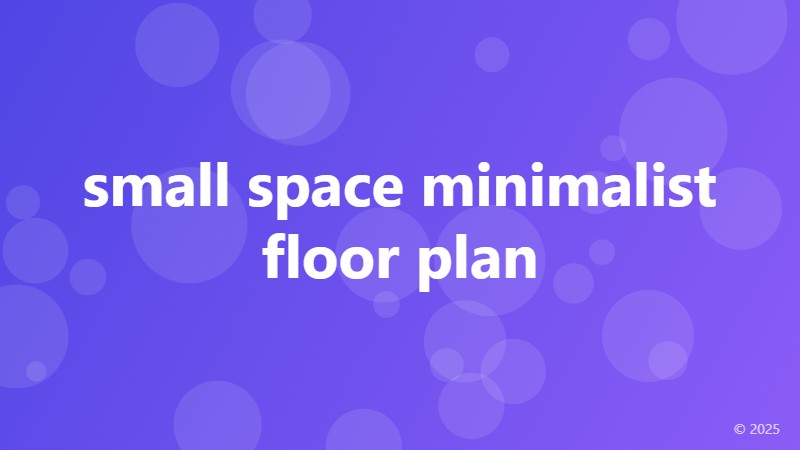small space minimalist floor plan

The Beauty of Minimalism: Maximizing Space with a Small Space Minimalist Floor Plan
Living in a small space can be a challenge, but with a well-designed minimalist floor plan, you can turn a cramped area into a functional and stylish haven. The key is to prioritize simplicity, efficiency, and clever use of space. In this article, we'll explore the benefits and essential elements of a small space minimalist floor plan, and provide you with practical tips to get started.
Benefits of a Small Space Minimalist Floor Plan
A minimalist floor plan is not only aesthetically pleasing, but it also offers several practical benefits. For one, it reduces clutter and visual noise, creating a sense of calm and serenity. It also encourages a more intentional approach to living, where every item has a purpose and a designated place. Additionally, a minimalist floor plan can increase the sense of spaciousness, making your small space feel larger than it actually is.
Essential Elements of a Small Space Minimalist Floor Plan
So, what are the essential elements of a small space minimalist floor plan? Here are some key considerations:
• **Multi-functional furniture**: Invest in furniture that serves multiple purposes, such as a sofa bed or a desk with storage. This will help reduce clutter and maximize space.
• **Open layout**: An open layout can make a small space feel larger. Consider combining living, dining, and kitchen areas into one cohesive space.
• **Simple color scheme**: A simple color scheme can create a sense of continuity and make a small space feel more spacious. Stick to a palette of 2-3 colors and use them consistently throughout the space.
• **Minimal decor**: Resist the temptation to over-accessorize. Instead, choose a few statement pieces that add visual interest without cluttering the space.
Designing Your Small Space Minimalist Floor Plan
Now that you know the essential elements of a small space minimalist floor plan, it's time to start designing your own. Here are some practical tips to get you started:
• **Start with a blank slate**: Begin by clearing out your space and starting from scratch. This will give you a fresh perspective and help you identify what you really need.
• **Measure your space**: Take precise measurements of your space and use a floor plan tool or app to visualize your design.
• **Prioritize functionality**: Think about how you want to use your space and prioritize functionality over aesthetics.
• **Keep it flexible**: A small space minimalist floor plan should be flexible and adaptable to your changing needs. Choose furniture and decor that can be easily rearranged or repurposed.
Conclusion
A small space minimalist floor plan is not only a stylish choice, but it's also a practical and efficient way to live. By prioritizing simplicity, functionality, and clever use of space, you can turn even the smallest area into a functional and beautiful haven. Remember to keep it simple, stay flexible, and don't be afraid to get creative with your design. With these tips and a little bit of imagination, you can create a small space minimalist floor plan that truly shines.